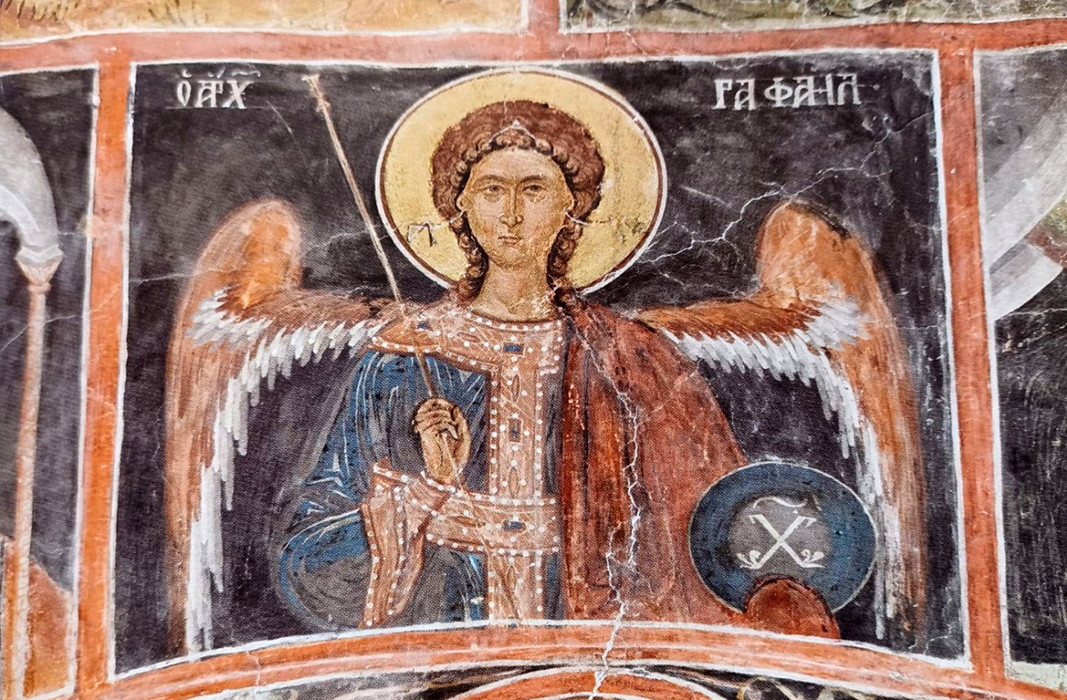THE SOUTH SLAVIC CHURCH COLLECTION
During the Dark Ages and Medieval period, the churches of Bulgaria and Serbia played crucial roles in shaping the spiritual, cultural, and political landscapes of the two regions. The influence of the Christian Church in both nations was profound, marking the transition from paganism to Christianity, the development of religious institutions, and the creation of a rich legacy of art, architecture, and literature. In the 9th century, Bulgaria became a pivotal center of Christianity in the Balkans. Under the rule of Tsar Boris I, Bulgaria officially adopted Christianity in 864 AD, a significant shift from its previous pagan traditions. The establishment of the Bulgarian Orthodox Church was integral to the country's national identity. The church was not just a religious institution but also a powerful political and cultural force. Tsar Boris I sought the creation of an autonomous Bulgarian Orthodox Church, which was granted by the Byzantine Emperor in 870, leading to the establishment of the Bulgarian Patriarchate. Bulgaria's contribution to Christian civilization was immense, particularly through the development of the Cyrillic alphabet by Saints Cyril and Methodius. These Byzantine missionaries were invited to the region by Tsar Boris to help spread Christianity and to translate the Bible and other religious texts into the Slavic languages. This linguistic achievement allowed the Slavic peoples to engage with Christian teachings directly and laid the foundation for a rich Slavic literary tradition. Monasteries, such as the famous Rila Monastery, became centers of learning, where monks not only preserved religious texts but also contributed to the development of art, music, and philosophy. The church also had a strong influence on the political life of the Bulgarian kingdom, with the Tsar often being seen as both the secular and religious leader, reinforcing the union of church and state.
Similarly, the medieval church in Serbia played a key role in the country's development. The Christianization of the Serbs began in the 9th century, with Byzantine missionaries bringing the faith to the region. However, it was under the rule of Grand Prince Vlastimir in the 9th century and later under the reign of Stefan Nemanja, who founded the Nemanjić dynasty, that Serbia firmly embraced Orthodoxy. The Serbian Orthodox Church gained prominence in the 12th century, particularly with the establishment of the autocephalous (independent) Archbishopric of Peć in 1219 AD, a significant moment in the history of the Serbian Church. This was achieved by Saint Sava, the son of Stefan Nemanja, who became the first archbishop and is revered as the founder of the Serbian Orthodox Church. Saint Sava's efforts to organize the church and establish a distinct Serbian identity marked a critical turning point in the religious and political development of the region. Monasteries like Studenica and Žiča became important spiritual and cultural centers, with monks not only engaged in religious worship but also in the production of illuminated manuscripts and the creation of religious artwork. The Serbian Orthodox Church played a vital role in fostering the country’s national unity, as it was instrumental in aligning the secular rulers with religious legitimacy. In both Bulgaria and Serbia, the Christian Church was a central force in shaping medieval society. It guided the transition from pagan beliefs to Christianity, established strong national identities, and created a cultural legacy that would persist for centuries. The churches in both regions also became centers of learning, preserving and transmitting knowledge that contributed to the broader Christian world. By fostering the development of religious, cultural, and political institutions, the Church in Bulgaria and Serbia during the Dark Ages and Medieval period had a lasting impact on the trajectory of both nations.

